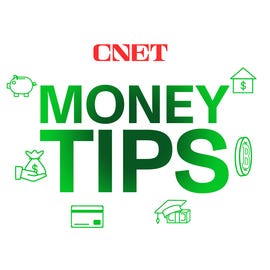As Savings Rates Rise, Should You Switch to an Online Bank?
Digital banks are having a moment. With many offering savings rates as high as 2% — and others well above — it might be time to make the switch from your traditional brick-and-mortar bank.

The Federal Reserve has raised interest rates several times this year in response to staggering inflation, a move that has increased the rate of borrowing but also bumped up the amount you can earn on your savings. Although online savings rates around 2% won’t offset inflation, it can help grow your savings faster than traditional savings accounts, which sit closer to 0.01%.
If you can’t remember the last time you stepped foot in your bank, it could be financially advantageous to switch to an online bank or “neobank” with no fees and better interest rates.
What are neobanks?
Neobanks — like Chime, Ally, Current, Varo and Revolut — are digital-only banks, or fintech companies that operate exclusively online. They don’t have any physical branches and your account can be entirely managed via your mobile phone.
With lower operating costs and overhead, neobanks can offer customers lower fees and higher-than-average savings yields. And, many of these banks offer innovative features like early access to your paycheck.
Neobanks are particularly popular among younger generations — 57% of millennials and 64% of Gen Zers have an account at a nontraditional financial institutions like neobanks or other fintech options, according to Bankrate. (Bankrate is owned by the same parent company as CNET.)
But before making the switch to a digital-only experience, here are some tips to keep in mind to make sure this move is worth it in the long run.
First, make sure you’re switching to a real bank
While many neobanks offer savings and checking accounts, debit cards and other standard banking features, they’re not always nationally chartered banks — with the exception of Varo — with all of the proper licensing. Instead, they’re “financial technology companies” that offer a more limited array of bank-like services.
This is a potential red flag since neobanks aren’t regulated in the same way as licensed banks. For consumers, it’s especially important to find out if there’s an actual bank or banking partner backing the neobank. At a minimum, you want to make sure that it provides FDIC insurance, which means that the federal government will insure your individual account up to $250,000 in the event the neobank folds. You can usually find the “We are not a bank” disclosure, along with any of the neobank’s legal bank partners on the “About us” pages.
Plan ahead for digital hiccups
Chime made headlines recently over its relatively high rate of customer complaints. Researchers found that Chime experienced outages in the past that allegedly left customers financially stranded, according to a ProPublica report in July. It also received 920 complaints filed at the Consumer Protection Bureau since April 2020, all related to “closed accounts.” At the time, Chime had about 12 million customers.
To contrast, Wells Fargo, which has had its own share of scandals, had only one-third as many complaints over similar “closed account” issues — but six times as many customers.
No matter where we park our cash, we must prepare for things to go wrong. This makes it all the more important that your financial institution has round-the-clock customer service support and, ideally, workarounds to help you access your cash when you need it. You may find a neobank that’s partnered with a specific ATM network. But in general, neobanks aren’t always as equipped as traditional banks to address these issues. If my bank’s app is down, for example, and I need to transfer money, I can always visit any ATM or send a check.
Creating your own backup plan, such as storing emergency cash in an alternate bank account in case of any unexpected disruptions, may be helpful.
“If switching to a non-brick-and-mortar makes you anxious, then only move some of your money if you want to check it out,” says Erin Lowry, author of The Broke Millennial.
Know how to reach customer support
While neobanks don’t have branches, they may have customer support powered by real people. This is an important feature and one worth prioritizing in your search for a well-suited neobank. In the event of a technical issue or outage, you want to know you can get help sooner than later. Before signing up, take the customer service for a test drive, to ensure help with a live person is easy to access, says Lowry.
Make sure the bank offers all the financial services you need
Does a neobank offer loans, credit cards, investment accounts and other services? It’s important to think about your long-term financial goals and how this digital-only financial account may — or may not — support you along your journey.
A more established bank with a robust digital arm may serve you better over the long term, especially if it has a more comprehensive lineup of products and services like mortgages and retirement accounts.
Don’t feel like you have to choose
I’m particularly happy with my bank’s digital experience, which for years has allowed me to deposit checks through the mobile app and send money seamlessly and safely to others. These are features that my bank was among the first to offer, beginning nearly 10 years ago, so it’s had time to work out some bugs and wonky user experience issues.
And while I know many may not have visited a bank branch since the pre-pandemic days, my bank’s local presence is comforting to me. I walked in to get a certified check for buying a car back in the day. And I felt better about depositing a large check in person last year, after we sold our apartment.
If you’re torn between a bank you love and interest rates you wish you had, it’s not an either-or decision. You can keep your primary bank account the same and divert your savings to go to a high-yield digital bank account. This way you still have access to your main bank’s convenient features, while maintaining a separate savings account that’s earning you more money.
I don’t see any clear and present danger to opening an account with a neobank — so long as your money is insured by the FDIC and you’re aware of its limitations. If it offers live customer support, even better. But having a backup bank with an ATM and a local branch, one where you keep your rainy-day savings, might not be a bad way to further ensure liquidity and access to cash in case of any tech disruptions.
The reality is that many of us, if we’re not already, will become polybankers. We’ll have accounts spread across various financial institutions because the likelihood that one bank (or neobank) will optimally solve all our banking needs is unlikely.
My mortgage is with a different bank where I found the best interest rate. I also have multiple credit cards across various issuers. So just like with retirement, it often pays to go with a diversified approach to banking for the best returns.
For all the latest world News Click Here

